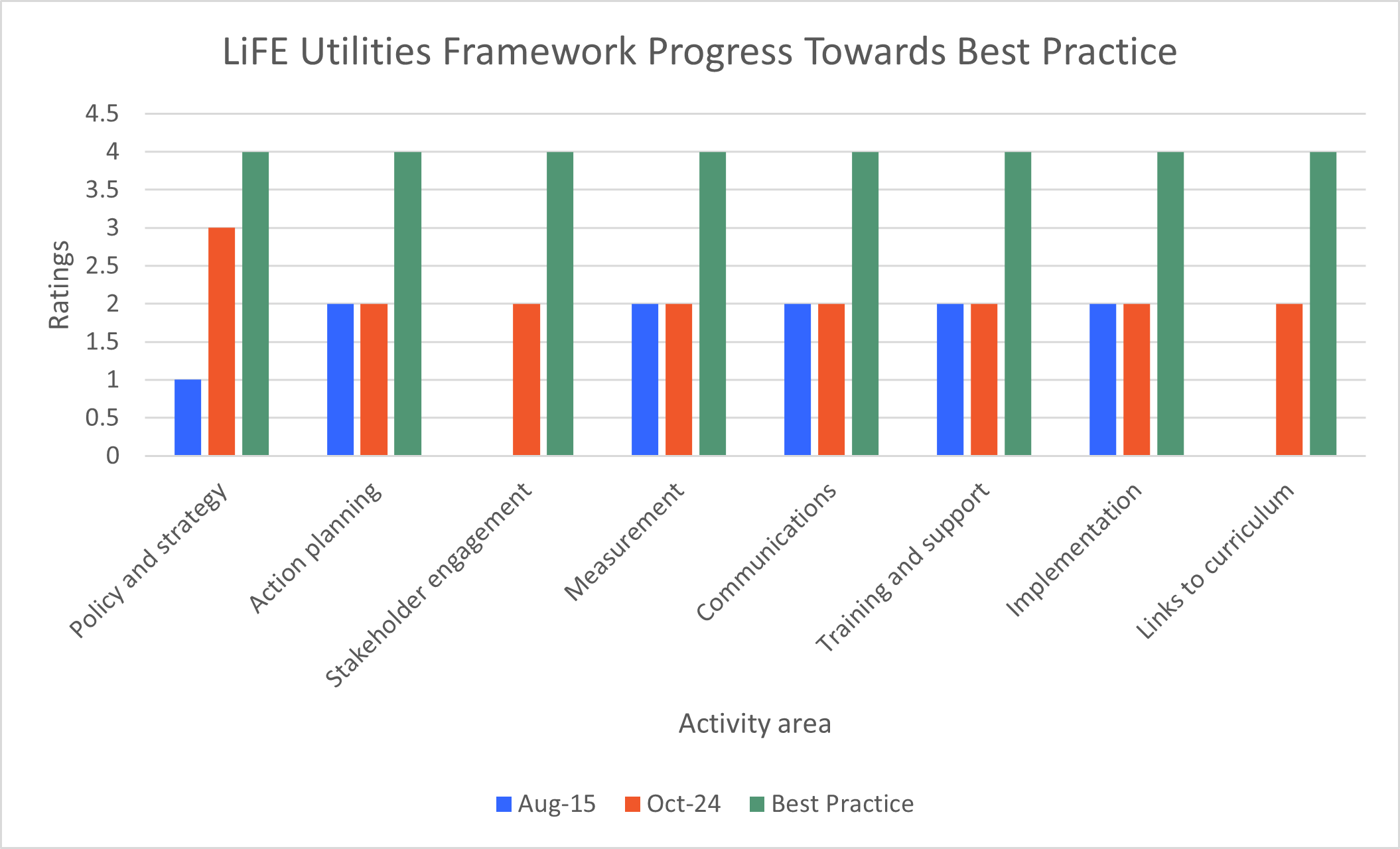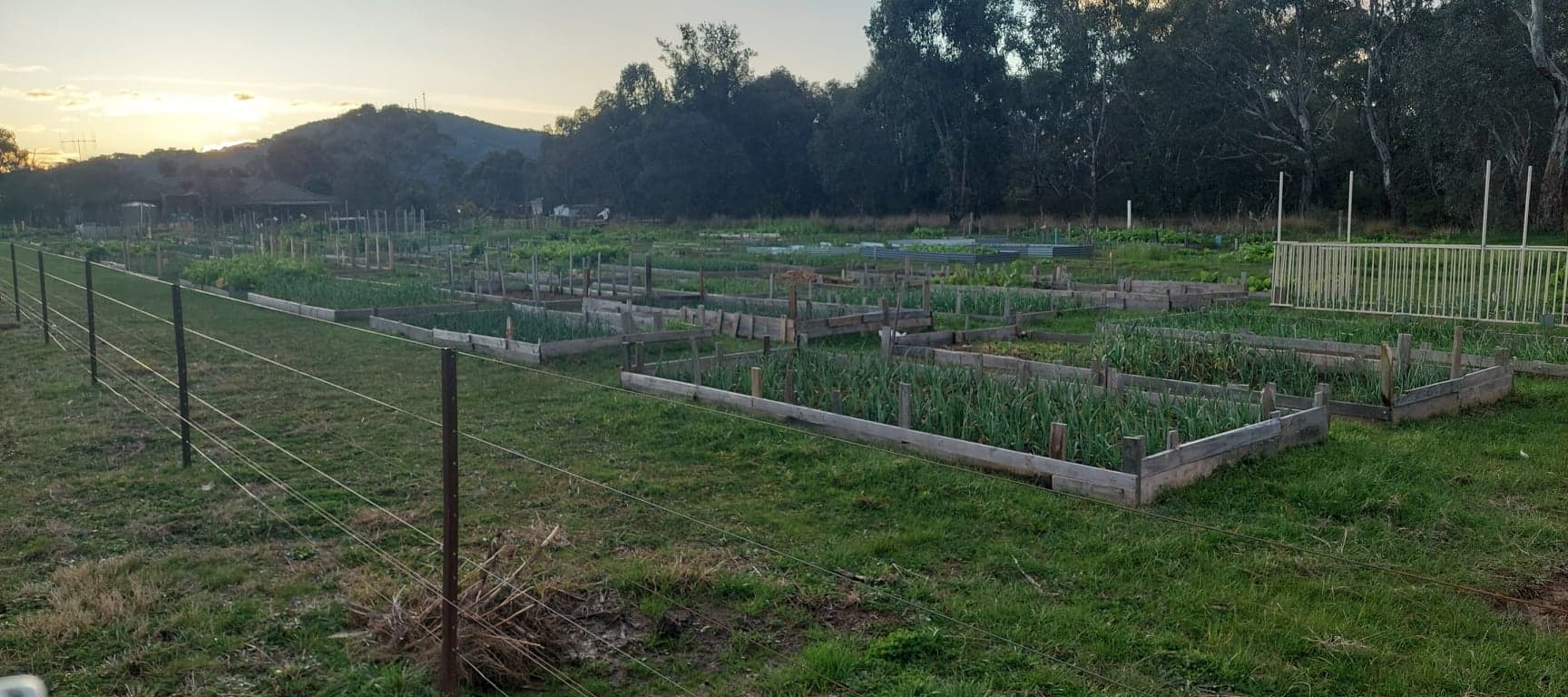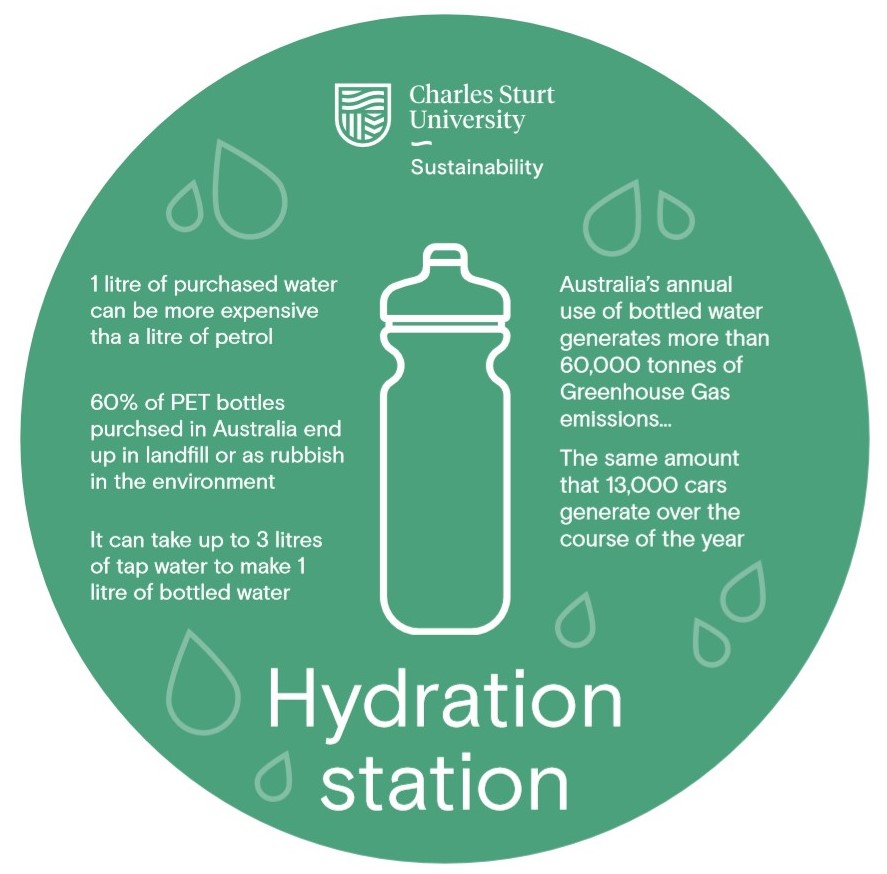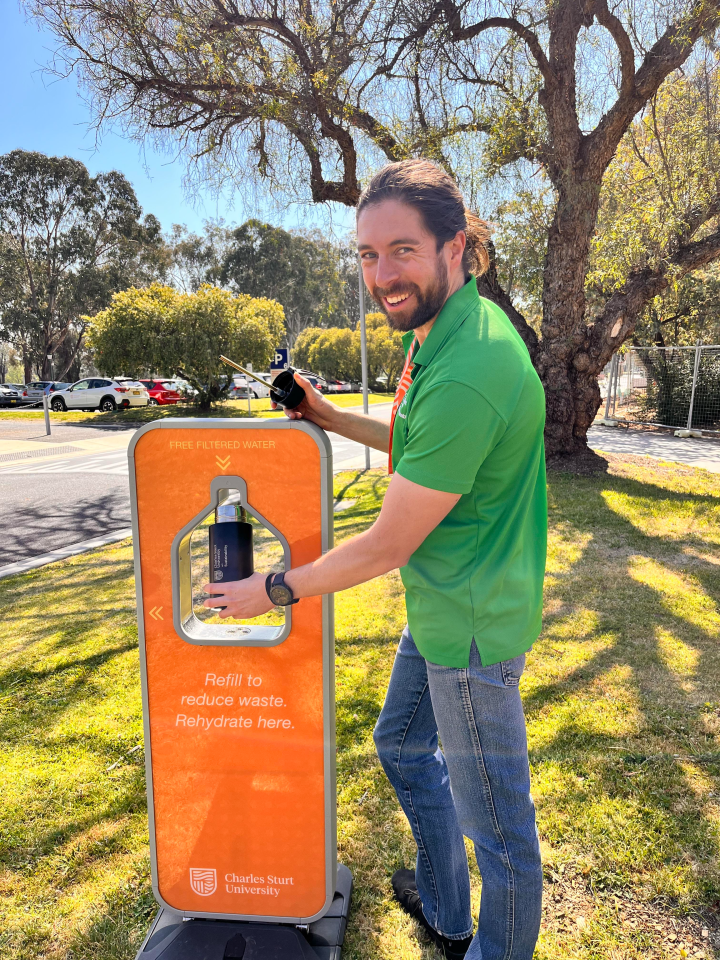Sustainability
- Home
- Locations
- What you can do
- LiFE Framework
- Sustainable Development Goals
- About us
- Grants
- Events
- Contact us
The cost to use water does not reflect the cost to the environment and society – institutions have been able to use natural resources at minimal expense. We all consume water faster than it can be naturally replenished and our draw on groundwater and river supplies affects ground stability and causes biodiversity loss.
Our water use at Charles Sturt University can be quite substantial and so it’s clear that we have a responsibility to ensure appropriate management of water. State and federal government legislative requirements drive Charles Sturt University and other institutions to use water wisely and efficiently in our operations.
The impacts of climatic conditions, such as drought and unpredictable rainfall patterns, in conjunction with local water restrictions, have forced us to carefully scrutinise where we can save water. Saving water also benefits the bottom line by reducing water bills and saving the University money.
Water management is about improving our operations to reduce water use. This applies to facilities, such as toilets, taps and showers, but also watering campus grounds and how water is used in labs.
This framework was benchmarked with the Energy framework under the title of ‘Utilities’ in 2015. The below graph illustrates our progress towards best practice across the eight (8) activity areas. The green bars reaching four (4) highlight best practice and the lower bars in blue indicate Charles Sturt’s current ratings. An absence of a blue bar indicates ‘no progress’ for this activity area.

The David Mitchell Wetlands serves as an instrumental demonstration of sustainable water practice. The wetlands were constructed in 1989 for treating greywater from campus buildings via a three root-zone treatment, gravel-based wetland system. Grey water is captured from a variety of on-site sources such as showers and sinks and is fed through a series of wetlands and retention basins before being pumped by solar and wind energy to water storage at the top of the hill to re-use onsite (see image below). The water storage utilises gravity fed systems to distribute the reclaimed water for use in irrigation.

More information on the David Mitchell Wetlands and its sustainable water extraction can be found within the following resources:
Non-potable water from the David Mitchell Wetlands was secured for the KSG through the successful application of a Sustainability at Charles Sturt Grant in 2021. For over a decade KSG has been a valuable feature of the Thurgoona campus; with over 80 regular gardener’s annual produce.
While demand for plots at the KSG has been high, recent urban development around Thurgoona has seen the demand increase dramatically - making expansion critical. Importantly, the infrastructure around the Kerr Cottage was old and constantly failing, resulting in more than 20,000 litres of potable water being lost per month. Apart from the loss of valuable potable water, the old infrastructure was a cost to the University through water bills and continual maintenance. Through the provision of non-potable water from the David Mitchell Wetlands to the KSG, the site can be disconnected from the potable supply and engaged in sustainable water extraction.

Additional Garden Beds constructed after the connection to a sustainable non-potable water supply in 2022
This framework has been combined with Energy to form the action plan for Utilities.
What you can do
A network of free water refill stations have been established across our campuses to provide all members of the campus community with free access to drinking water.

By not purchasing disposable bottled water and instead filling up your reusable bottle at one of our hydration stations, you’re helping to:
Find the Hydration stations on your campus at FMCentral. Go to 'Map Enquiry’ and activate the ‘Sustainability’ folder for your chosen campus. This is found within the ‘Features’ folder.

Charles Sturt takes its responsibilities to wastewater management and pollution seriously and has the following measures in place to support this:
A water conservation signage and education campaign was implemented during drought conditions. This targeted our northern campuses of Dubbo, Orange and Bathurst.
The signage campaign encouraging all campus users to reduce water consumption was installed in bathroom amenities across all campuses.
We have installed a fleet of intelligent Hydrawise irrigation controllers across the Wagga Wagga campus.
The system is setup to monitor weather (eg rainfall, high wind) and adjust irrigation schedules to maximise efficiency. Integrated sub- meters are also monitored by the system so any inefficiencies can be detected. Program adjustments can be made remotely by the operator leading to improved control practices.
In line with local water restrictions and to reduce consumption on our major garden beds, we converted large rotary sprinklers approximately 12 litre per minute to drip line.
Benefits include:
Charles Sturt’s Sustainable Building Design & Construction guidelines stipulate the following water conscious principles:
Charles Sturt University maintains a range of water harvesting and reuse systems across its campuses. These include:
Below is an example of rainwater harvesting data captured by our Building Management System (BMS) for the Building 802 situated on the Charles Sturt Port Macquarie campus. Rainwater harvesting data collection via BMS occurs for a number of buildings across all of our campuses.
Charles Sturt’s Facilities Management team are mindful of progressively reducing the irrigation needs of our campuses. This is best achieved through the selection of appropriate plant species that are suited to our inland climates which receive lower annual rainfall than coastal areas of Australia. A number of landscaping and revegetation projects completed recently that are contributing to this effort include:
Charles Sturt University aligns our research, policies, procedures, and other work with the UN Sustainable Development Goals (SDGs). These are the most relevant SDGs for this initiative.